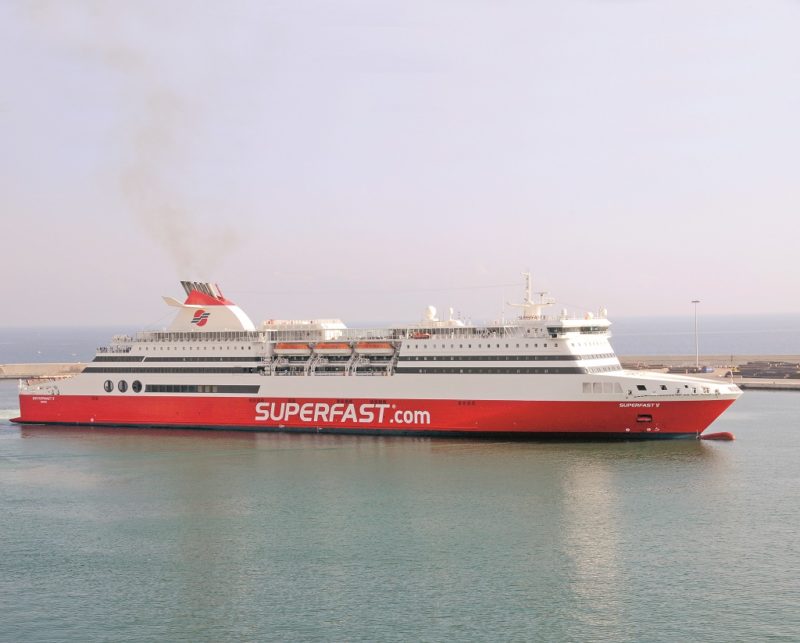
Bari is a vibrant port and university town, with up to 250 cruise ships and 600,000 cruise passengers, and almost two million ferry passengers sailing to Greece, Montenegro, Albania and Croatia every year. Bari is the main city of Apulia and combines the scents and flavours of a typical seaside city with the stronger agricultural aromas of its hinterland. The city is one of the principal destinations of Orthodox Christians as the relics of Saint Nicolas are enshrined here in the Basilica of Saint Nicolas. The city is divided into three areas, with the Old Town as the original medieval settlement where all of the day to day social and business activities take place, the New Town with more elegant shops, cinemas, theatres and entertainment, and the Port and Industrial area. The Port is divided into two areas, with the commercial and passenger traffic in the north, and tourist, small fishing boats, and marinas to the south and west.
Apulia is famous for olive oil, artichokes, tomatoes, aubergines, asparagus, mushrooms, and carosello, a type of musk melon, as well as many types of cheese. Lecce to the south of Brindisi is known as the ‘Florence of the South’ for its baroque architecture and whitewashed houses, and Alberobello in the Itria valley has distinctive stone huts with conical roofs known as ‘trulli’. The landscape elsewhere is harsh, dry with poor soils and rocks, leading to the area being known for its poverty along with the whole of Southern Italy. However, in recent times the GDP per capita of the population averages E19,000 per year.
The main and important ports of Bari and Brindisi, together with three other minor ports, form the Porti dell’Adriatico Meridionale or the Port of the Southern Adriatic of Italy. Bari and Brindisi have always been considered as the southern Italian gateway to Greece, Croatia and the Eastern Mediterranean. The combined ferry passenger and cruise passenger traffic of the two ports is considerable at over two million passengers per annum. The freight throughput in 2019 of the combined ports was 16.55 million tonnes of which Bari freight traffic was 5.7 million tonnes, Brindisi freight traffic was 10.7 million tonnes, with the minor ports of Manfredonia and Barletta, to the north of Bari, and Monopoli, to the south of Bari, contributed the remainder.
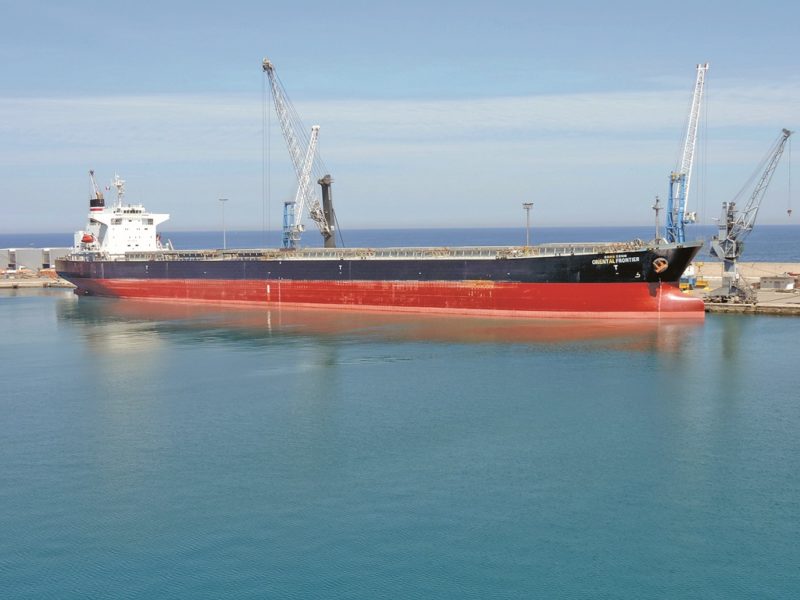
HISTORY OF BARI AND BRINDISI
Bari is the capital of the Apulia (Puglia in Italian) region of Italy and is the second most important economic centre of Southern Italy after Naples. The city dates back to the time of Greek influence around 1500 BC, with the Romans then in control from 300 BC and they had an important seaport here around 200 BC. Various invaders then occupied the town, and the Port of Bari was destroyed in 1246. Holy Roman Emperor II restored the city but it was destroyed again several times over the next decades as the various Mediterranean powers struggled for dominance. The long decline of the port ended when Joachim Murat, the brother in law of Napoleon Bonaparte became King of Naples in 1808, and he ordered the construction of a new town, which is still known today as the Murat quarter and the modern heart of the city. The Murat quarter is laid out on a rectangular grid plan with a promenaded seafront facing the sea and two major shopping areas. The city has a population of 327,000 (2017) in an urban and rural area of 45 square miles with a metropolitan area population of 1.6 million.
The old town with very narrow streets, known as Barivecchia or Old Bari, was built with the Basilica of Saint Nicolas in Romanesque style with a simple Romanesque façade with three portals and a beautiful rose window decorated with fantasy figures. The Cathedral of San Sabino (1035-1171) and the Norman Hohenstaufen Castle are impressive, the latter is today known as the Swabian Castle with tall very thick walls and was built by Roger II of Sicily, but was destroyed in 1156 by the people of Bari in protest against the tyranny of the Normans, and then rebuilt by Frederick II. It now serves as an art gallery with many exhibitions throughout the year. The main art gallery in the city is the Provincial Picture Gallery of Bari (Pinacoteca Provinciale di Bari) and was established in 1928 with contemporary paintings from the 15th century up to the present time. The Petruzzelli Theatre hosts all types of entertainment, after reopening in October 2009 after years of refurbishment after a major fire. The legacy of the dictator Benito Mussolini can be seen in the imposing architecture along the seafront. Modern residential areas surrounding the city were built during the 1960s and 1970s, replacing the old suburbs. The city has a redeveloped airport, Karol Wojtyla Airport, with connections to several major European cities.
Operation Slapstick took place on 9th September 1943 and was an amphibious operation that saw 3,600 troops of the British 1st Airborne Division capture Taranto, which the Italians had agreed to offer no resistance under the terms of their surrender six days earlier. This force arrived by sea in six British warships and passed the surrendered Italian fleet including the battleships Andrea Doria and Caio Duilio, heading south to Malta. There were some nervous moments as the two battle fleets passed each other. This gave the 8th Army under Montgomery a second foothold in Italy and allowing them to take control of the small port of Monopoli, 40 miles north of Taranto, on 10th September and Bari and Brindisi a day later.
The 78th Division landed and reinforced Bari on the night of 22nd-23rd September, and then the 2nd New Zealand Division took over the occupation of Bari in October and November 1943. The first part of the British invasion had taken place on 3rd September on the tip of Calabria, launched from Messina in Sicily. This part of the 8th Army then fought its way slowly up the Calabrian coast as the Germans retreated, demolishing bridges and other features as they went. The American and British landings at Salerno on 12th September did find stiff resistance from the Germans, but some of the British troops from Taranto were only 50 miles away at Potenza in the hills and then linked up with the Salerno force and the British troops that had landed from Messina.
However, during the night of 2nd December 1943, 105 German Junkers Ju 88 bombers attacked the Port of Bari, a key supply centre for Allied forces fighting their way up the Italian peninsula. Twenty two British and Allied ships were sunk in the overcrowded harbour, including the ‘Liberty’ ship John Harvey, which was carrying mustard gas intended for retaliation if German forces had used gas as chemical warfare. Fatalities occurred due to the devastation to the structure of the buildings of the port, but also due to incorrect treatment of casualties gassed when supplies of mustard gas stacked on the quayside blew up.
The forward base of Bari in the Adriatic had Coastal Forces of several MTBs (Motor Torpedo Boats), which were called upon to carry 0ut rescue operations for survivors in the water from sinking ships. Many were covered in oil with their clothing contaminated by the mustard gas, and were treated on the MTB base ship, the former twin funnelled Harwich to Hook ferry Vienna. On the day of the raid, nineteen ships entered the very congested harbour and were berthed side by side with their sterns to the breakwater wall. The raid took place at 1900 hours and sixteen ships of the convoy and 38,000 tons of cargo were destroyed. On the orders of General Eisenhower and the American President and Winston Churchill, records of the mustard gas casualties were destroyed, and remained secret until 1967, when the episode was exposed in the book ‘Disaster at Bari’ by Glenn B. Infield. The exact number of deaths from this disaster is not known, but was probably in excess of one thousand Allied servicemen and one thousand Italian civilians.
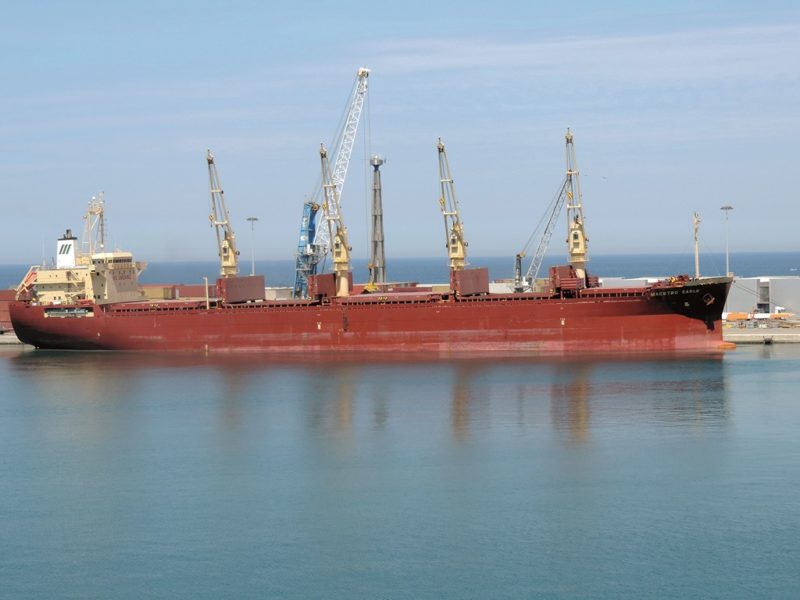
The Port of Bari was again struck by disaster on 9th April 1945 when the ‘Liberty’ ship Charles Henderson exploded in the harbour while offloading 2,000 tons of aerial bombs, with another one thousand tonnes already unloaded on the quayside. The death toll this time was 360 people killed and 1,730 people seriously injured. The Port of Bari was again inoperable for over a month, and the damage to the buildings and structures in the immediate port area was so great that this entire port area had to be completely demolished and rebuilt when the war was over.
The city of Brindisi lies 60 miles south of Bari on the coastal road, and has some impressive sights. It was the former Roman city of Brindisium from 267 BC with historical roles in Roman naval power, trade and culture due to its unique position as the shortest ferry connection from Italy to Greece. It was originally a Mycenaean and Messapian settlement and was colonised from Knossos in Crete. The Roman name of Brindisium relates to the shape of the harbour and means ‘deer’s head’. The city has a medium sized port supplying agriculture, wine, olive oil, silk, sugar refineries, petrochemical and electricity generation industries. The outer harbour of three harbours includes the islands of Pedagne, a tiny archipelago, currently in use by the military and closed to the public, and was used by United Nations troops during the intervention in Bosnia. The territory of Brindisi has a wide flat area with the Itria Valley 25 miles away, and much agricultural use, as well as the Torre Guaceto Natural Marine Reserve to protect fish stocks. Deposits of limestone, sand and clay have been much used by the local population.
The poet Pacuvius was born here in 220 BC and the more famous poet Virgil died here in 19 BC. Roman Brindisium was a large city of 100,000 inhabitants and was connected to Rome by the Via Appia and the Via Traiana, and two tall pillars marked the end of this important trade route on the steps leading to the harbour. However, only one pillar remains, the second having been stolen and taken by the small town of Lecce to the south. After the fall of the Roman Empire, the city was conquered by many races, including the Ostrogoths, Byzantines, Lombards, Normans, Crusaders, Venetians, Neapolitans, Austrians and Bourbons. Emperor Frederick II sailed from the Port of Brindisi in 1227 on the Sixth Crusade to Jerusalem. He built a castle with huge square towers on a trapezoidal plan to guard the inner harbour, it later became a convict prison and was used by the Italian Navy. During the brief period after the Italian surrender in September 1943, it was used by King Victor Emmanuel III of Italy.
The Duomo (Cathedral) was built in the Romanesque style during the 11th and 12th centuries, but the original cathedral was destroyed by an earthquake on 20th February 1743, with only parts of the original mosaics in the interior still visible. The portico of the Knight Templars was originally the entrance to the Bishop’s Palace and is now the entrance to the Museo Ribezzo. The Grand Fountain was built by the Romans on the Appian Way, and the Red Castle, from the colour of its bricks, is on the island of San Andrea facing the port and was built by King Ferdinand I of Naples in 1491. The Church of San Bernadetto has a large tower and is in Romanesque style and was built in the 11th century as part of a Benedictine nunnery. The Church of Santa Maria del Casale of the late 13th century is in the Gothic style with a façade of a geometrical pattern of gray and yellow stones, with frescoes inside including the Last Judgement in four sections by Rinaldo da Taranto.
The population of Brindisi is 413,300 spread over 128 square miles, while the population of the inner city and port is only 87,150. The patron saints of the city are St. Theodore of Amasea and St. Lawrence of Brindisi. A wetland park of 87 hectares (214 acres) is the regional natural park lying between Capo di Torre Cavallo and Punta della Contessa. The emblem of the city of Brindisi is taken from the ‘deer’s head’ shape of the harbour, and also contains the Pillars at the end of the Appian Way of Roman times.
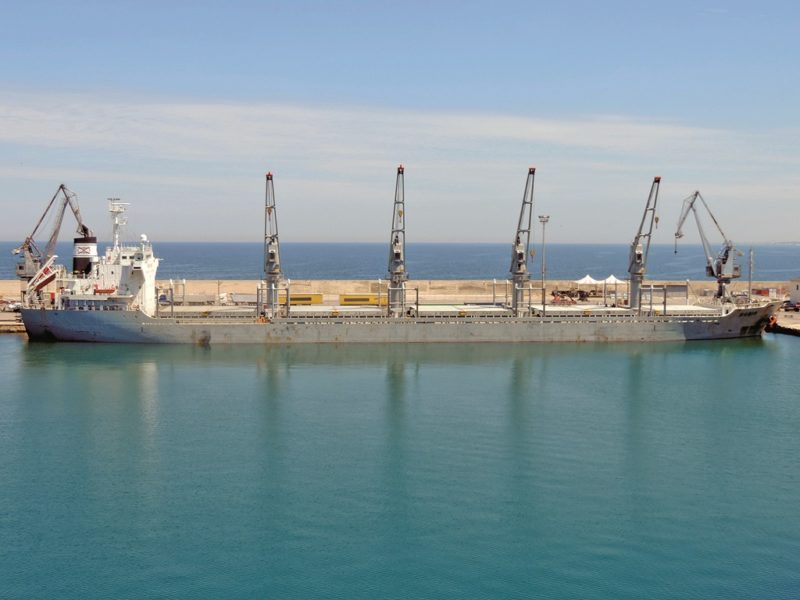
THE PORT OF BARI
The freight traffic of Bari consists of dry bulk and liquid bulk cargoes, containers, forestry products, steel plates, coils and bars, packaged goods, horse and cattle livestock imports and exports, and fish processing. The traffic amounted to 5.7 million tonnes in 2019, with the port having very good facilities for the storage and temperature maintenance of refrigerated and frozen food, and for the stuffing, destuffing and repair of containers, the container traffic in 2019 being 81,500 TEU of containers.
The berths in the Port of Bari are as follows:-
Outer Harbour has 2,360 metres of quays along the breakwaters, of which Molo San Cataldo and New Molo Foraneo of combined length of 1,230 metres and alongside depth of 13.4 metres are reserved for tankers, with pipelines under the harbour to a refinery. The Stanic Industria Petrolifera spA (SIP) refinery has a production of 122,000 barrels of refined oil per day and was opened in 1974. Contracts for the design, building and engineering aspects of pollution abatement facilities had been signed that year for both the pipeline and the refinery, plus a desulfurization plant to recover 0.5 million tonnes of sulphur per year.
Darsena di Levante (Eastern Basin) has Molo Foraneo for ro-ro traffic with 983 metres of commercial quays and alongside depth of 9.7 metres.
Darsena Interna (Inner Harbour) has the large San Vito Cruise Terminal and San Vito Cruise Berth, a two minute walk apart, with a 15 minute walk to the old town. On exiting the port, the Lungomare coastal road leads around the peninsula.
Ferry Terminal at San Vito 2, 3 and 4 berths, with regular sailings to Greece (Igoumenitsa and Corfu), Albania (Durazzo), Macedonia (Bar), and Croatia (Dubrovnik).
Molo Pizzioli and the area of the south and west of the harbour has been partly converted into long, open promenades in recent years with shops, tour boat and yacht agencies, and marinas.
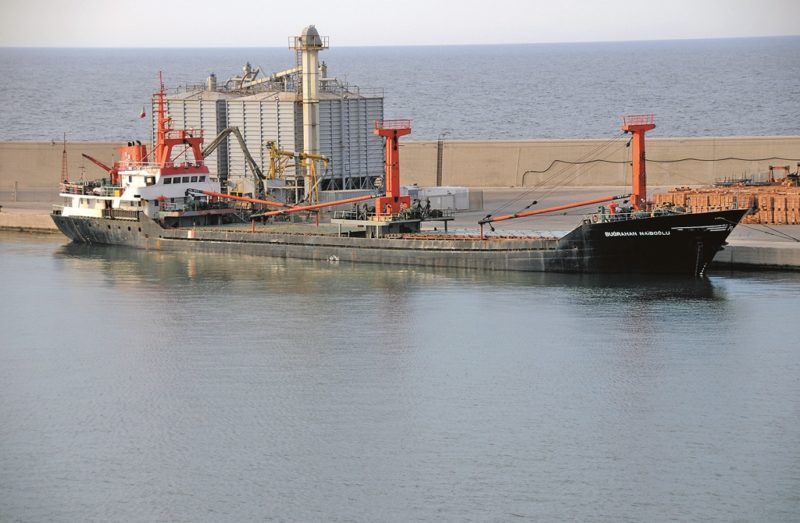
THE PORT OF BRINDISI
The freight traffic of Brindisi in 2019 consisted of dry bulk (7.60 million tonnes) and crude oil and liquid bulk cargoes (1.90 million tonnes), liquid gas (0.95 million tonnes), alimentary vegetable liquid bulk (0.14 million tonnes), and grain and general cargo (0.13 million tonnes) to give a total of 10.7 million tonnes. The 30 berths in the Port of Brindisi are as follows:-
OUTER HARBOUR has 3 million m2 of water surface area.
N27 – Molo Polimeri Punto 5 (Oil)
N28 – Molo Polimeri Punto 7 (Oil)
N29 – Molo Polimeri Punto 12 (Oil)
N30 – Diga di Punto Riso-Centrale Alto Fondale (Oil)
MIDDLE HARBOUR has 1.2 million m2 of water surface area.
N15 – Costa Morena Terrare Punta Ferry Terminal
N16 – Costa Morena Terrare 1 Ferry Terminal
N17 – Costa Morena Terrare 2 Ferry Terminal
N18 – Costa Morena Terrare 3 Ferry Terminal
N19A – Open Ferry berth
N19B – Open Ferry berth
N19C – Open Ferry berth
N20 – Central Open Ferry berth
N21 – Open Ferry berth
N22 – Open Ferry berth
N23 – Open Ferry berth
N24 – Costa Morena Riva (Oil)
N25 – Costa Morena Open Ferry berth
N26 – Costa Morena Open Ferry berth
N26B – Costa Morena Nord Open Ferry
N26C – Costa Morena East Open Ferry berth
INNER HARBOUR is formed by two natural bays, with the Seno di Levante for commercial traffic with 727m2 of water surface area, and the Seno di Ponente for naval and military use.

N4 – Centrale-Lato Ponente Banchina Dogana (General cargo)
N5 – Stazione Maritima Dogana (Ferry & Cruise Terminal)
N6 – Carbonifera Sez Nord (Coal & Bulk)
N7 – Carbonifera Sez Sud (Coal & Dry Bulk)
N8 – Traghetto Vecchia Rampa (Ferry & Ro-Ro)
N9 – Traghetto Vecchia Rampa (Ferry & Ro-Ro)
N10 – Nuovo Rampa di Levante (Ro-Ro)
N11 – Feltrinelli 1 and 2 (Ferry & Ro-Ro)
N12 – Punto Franco Sud (Grain silos)
N13 – Punto Franco Lato Nord (Grain silos)
N14 – Montecatini y San Apollinare (General cargo)
The Inner Harbour quays are of a total of 1,925 metres in length with alongside depths of 8.5 to 10.0 metres. The Middle Harbour quays are of a total of 1,170 metres in length with alongside depths of 14.0 metres and handle containerised cargoes with oil pipelines for oil and liquid bulk cargoes. The Outer Harbour quays are 700 metres in length with alongside depths of 14.0 metres.
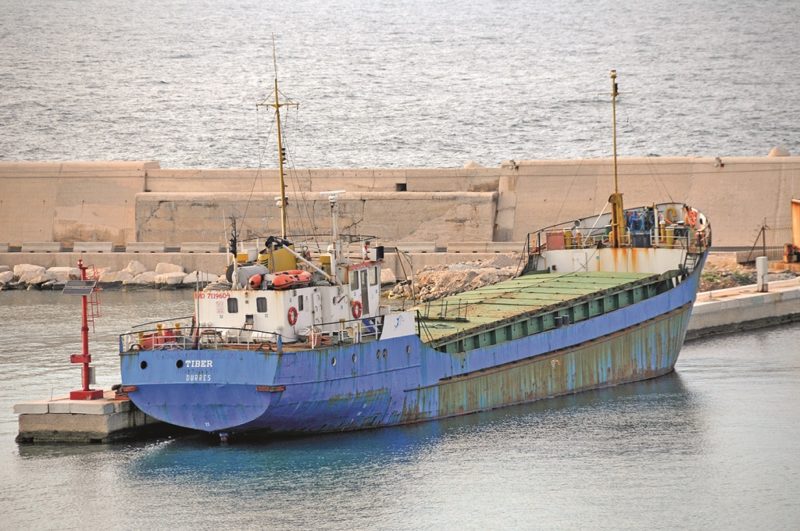
ENEL is the largest power generation company in Italy, using gas and coal to generate electricity, and has the subsidiaries Polimeri, Edipower and Ipem. ENEL also sells electricity to other Mediterranean countries, and also has petrochemical industries, oilfield services and construction companies, and general engineering companies. A 13 kilometre conveyor belt links the port to Cerano and the thermo electric plants of ENEL and Edipower, with much ash produced by the combustion. Coal arrives and is discharged by giant ship unloaders in Panamax bulkers at Brindisi, such as Navios Sagittarius of 75,750 dwt and built in 2006 for Navios Maritime Holdings of Greece. The A2A Future Energy Plant uses the tanker berth N24 in the Middle Harbour of Brindisi.
The Outer Harbour contains oil berths with alongside depths of 13.7 metres and several mooring buoys, and also the islands of Isola Traversa, Isola La Chiesa, Isole Pedagne and Isola Santa Andrea. The Brindisi entrance width between the piers is 250 metres with a depth over the bar of 10.3 metres. Pilotage is compulsory and pilots board one mile off the port entrance. The maximum tidal range is negligible at only one foot and tidal currents are insignificant. The extent of the harbour from the piers to the innermost berth of the Inner Harbour is three miles.
Cristal Union, a leading agro-industrial co-operative group in Europe with interests in sugar, alcohol, bioethanol, and many other bio products owns the Brindisi sugar refinery. Raw sugar is imported in bulk carriers for refining at the SFIR Raffineria di Brindisi (SRB) with a refined sugar output of over 300,000 tonnes of sugar per year. Cristal Union made an important first step in expansion in 2019 by making an alliance with American Sugar Refining Inc. (ASR), and then followed this up with the purchase of the Brindisi sugar refinery.
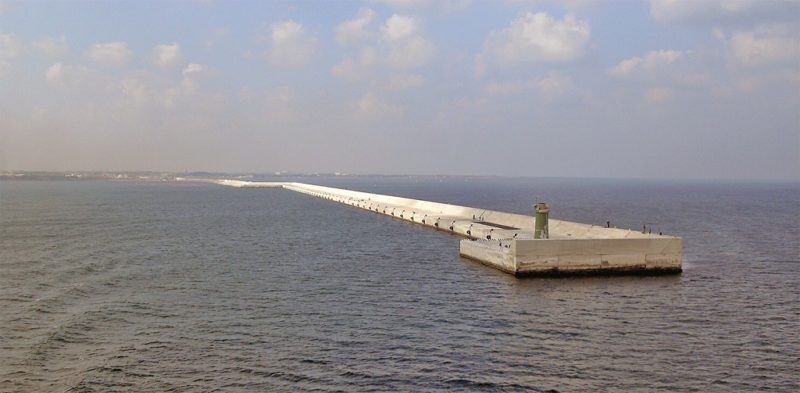
FERRY LINES OPERATING FROM BARI AND BRINDISI
There are up to ten ferry companies sailing from the Ports of Bari and Brindisi, and include the well known Grimaldi Lines (Grandi Navi Veloci or GNV), European Seaways, ANEK Lines of Greece, Superfast Ferries of Greece, Ventouris Ferries of Greece, Adria Ferries, Azzurra Line, and Red Star Ferries. The latter company operates only in the summer season, with its subsidiary and agents of SEAMED Trading & Shipping Srl operating year round passenger and freight ro-ro services. It is 66 miles south from Bari to Brindisi with the fast train taking one hour and twelve minutes for the journey to reach the Port of Brindisi with the shortest voyage across the Strait of Otranto to Greek ports.
There are several ferry lines operating to Greece either from Bari or Brindisi at the height of the summer tourist season, and a similar number of ferry lines operating to Greece from the Northern Adriatic ports of Ancona, Trieste and Venice. All ferries operating from Bari or Brindisi to Greek ports turn hard to starboard after leaving port to steer a south east course. The relatively narrow Strait of Otranto can thus have a high density of fast ferries travelling either north or south, and can lead to collisions, groundings or fires and explosions on their car and freight decks. One such example was the ‘Visentini’ type ro-pax Norman Atlantic, which came to grief in a devastating fire on 28th December 2014, with the vessel left only fit for the scrapyard.
She had been built as Akeman Street in 2009 by Cantiere Navale Visentini at Porto Viro in Italy for the Ermine Street Shipping Co. Ltd. of London. She was of overall length 610.3 feet, moulded beam of 84.0 feet, moulded depth of 49.3 feet, and a loaded draft of 22.0 feet. She had a service speed of 24.5 knots with a maximum on trials of over 25.0 knots from two MAN-B & W oil engines of 29,000 bhp, and could carry 850 passengers and 200 lorries and cars on her vehicle deck, with a crew of 185. She had a number of exact sisters including Scottish Viking, Stena Flavia and Etretat and had been on charter to Saremar, Grandi Navi Veloci (GNV), Moby Lines, LD Lines, Caronte & Tourist and ANEK Lines during her short five year career, and was registered in Bari on charter to ANEK Lines at the time of her loss.
Norman Atlantic sailed from Patras in Greece at 1750 hours on 27th December 2014 and was expected to arrive at 2030 hours at Ancona on the following day. She made an intermediate call at Igoumenitsa in Greece at 0150 hours on 28th December, and left port carrying 417 passengers, 222 vehicles and 55 crew members, but later it was discovered that there were at least six illegal stowaways onboard. She reached a position 44 nautical miles north west of the island of Corfu and 33 nautical miles north west of Othonoi in Greek territorial waters when a fire was discovered on the open Deck 4 ro-ro space at 0515 hours. A second fire alarm sounded by the automatic fire alarm system eight minutes later, with the main passenger and crew accommodation directly above on Deck 5. However, the fire drencher system was activated only on Deck 3, rather than in the area of the fire, probably due to confusing labelling on the valves, after her Master from the bridge spotted flames and smoke coming from the windows on Deck 4.
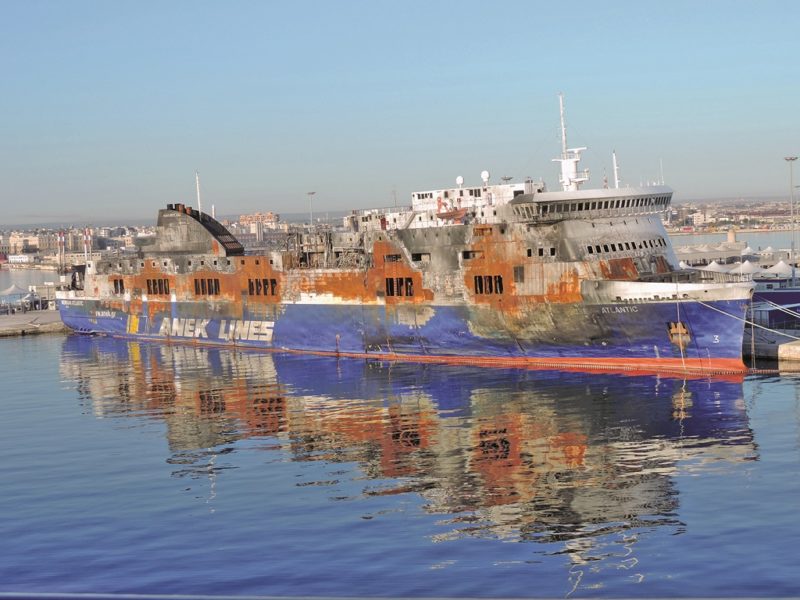
The fire rapidly billowed out of control, and her Master made his first distress call to Brindisi Coastguard at 0538 hours, with fifteen merchant ships in the immediate vicinity of the casualty. The first rescue was made by a bulk carrier with 39 people from the liferafts of the casualty, and another was rescued from the sea by a tanker, and the giant GNV Grimaldi ferry Cruise Europa rescued another 69 passengers and took them to Igoumenitsa.
The fire rapidly destroyed the rescue boat, lifeboats and the rescue chute on the starboard side of the ship. The Master did not give the order to abandon the ship until four hours after the fire took hold, and thus passengers immediately congregated on the port side after their cabins had filled with smoke. A group of 49 passengers escaped in the port side lifeboat while the heat from the deck where they were standing had melted their shoes, they were rescued by a Singapore registered container ship and landed at Bari. The crew were overwhelmed by the fire crisis and gave little help to the passengers and lorry drivers, with several people jumping into the sea to die from hypothermia.
All power had failed on Norman Atlantic and the first rescue tug on the scene was Marietta Barretta from Brindisi, which attached a line to the ferry to turn her into the wind, which was gusting to 50 mph throughout the rescue. Helicopters arrived on the scene to winch the remaining passengers from her decks, and Capt. Giacomazzi was the last person to leave the ship at 1450 hours on the 28th December, nine hours after the fire had started. At least, twelve people plus an unknown number of illegal immigrants had died, and two further crew members of the tugboat died when the connecting cable to the fire ravaged vessel snapped. An Orthodox Christian priest from Georgia had helped many others to evacuate, but did not survive the inferno and his body was retrieved from the sea off Lecce on 30th December. The subsequent enquiry was as thorough as possible into all possible causes, but was hampered by the heat having melted the black box recorder and no data could be taken off the hard disk. The ship was badly fire damaged and a total wreck, and was towed from the Port of Bari to a scrapyard in Aliaga in Turkey in 2019.
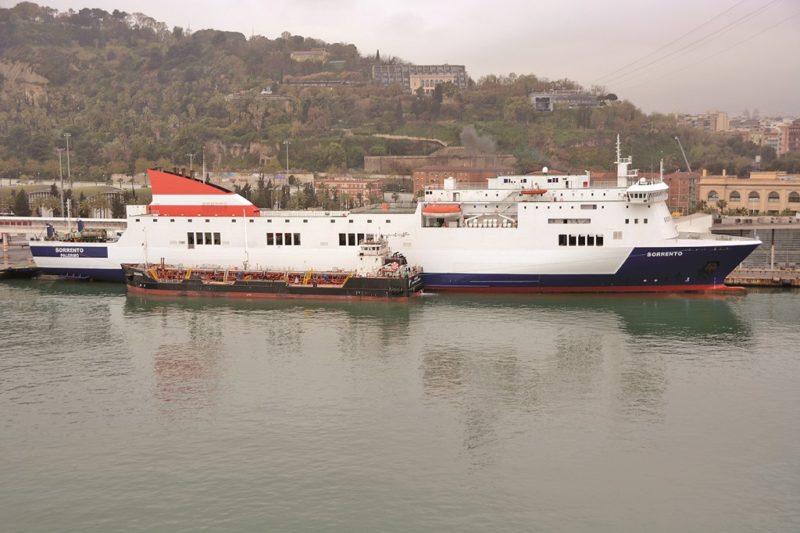
The ferry lines operating from either Bari or Brindisi are as follows:-
GRIMALDI LINES (Grandi Navi Veloci)
The ferry division of this well known Italian shipowner was founded in 1947 and currently has two very large ferries operating on their main Italy to Spain and Greece routes in Cruise Olympia and Cruise Europa. They were actively involved in the Italian Viamare ‘Motorways of the Seas’ initiative to take very large numbers of lorries off Italian roads in north to south voyages of both the Adriatic and Tyrrhenian Sea. New ‘Visentini’ type fast ferries were built with ‘VIAMARE’ and arrows on both sides of their hulls and funnels. They have had three ‘Visentini’ type ro-paxes operating from Brindisi to Igoumenitsa, Corfu and Patras in recent years, taking 7 hours 30 minutes, 6 hours 50 minutes, and 16 hours respectively. The ferries currently running are Corfu of 27,522 grt, and built in 2006 as a ‘Visentini’ type ro-pax under the name of Cartour Gamma, and Florencia. Florencia is of 26,302 grt and was built as Golfo Arancia for Lloyd Sardegna and was purchased by Grimaldi in 2007 and has accommodation for 950 passengers. Sorrento was built in 2003 as Eurostar Valencia for Grimaldi and was purchased by Grimaldi in 2006. She was sold to Acciona Trasmediterranea in 2014 without change of name, and was destroyed by fire on 28th April 2015 while sailing from Palma to Valencia, all passengers and crew were saved. The GNV agents at Brindisi are Discovery Shipping Srl.
EUROPEAN SEAWAYS
This line operates from Brindisi to Corfu and Igoumenitsa, and from Brindisi to Vlore, and uses three ferries during the peak summer tourist season. The ferry Galaxy was built in 1979 of 10,553 grt with accommodation for 900 passengers and 280 vehicles on her car deck and was purchased by her present owners in 2017 and has a maximum speed of 20 knots. The ferry Golden Bridge was built in 1990 and is of 26,463 grt with accommodation for 1,500 passengers and 500 vehicles on her car deck and serves the Greek route from Brindisi and has a maximum speed of 23.2 knots. The ferry Prince of 13,326 grt was built in 1974 as Prinsessan Birgitta for Sessan Line and has accommodation for 1,230 passengers and 300 cars on her car deck, with a service speed of 22 knots. She sailed from the Tyne to Norway as both Venus and King of Scandinavia between 1990 and 2002, and is currently laid up at Katakolon during the winter season as Princess. European Seaways has used many former British ferries in the past including Senlac, European Spirit, European Glory, European Star, European Pride and Earl William. The funnel colours of the company are blue with a central red band holding a white disc with ‘ES’ in red.
ANEK LINES and SUPERFAST
FERRIES of Greece
A dozen ‘Superfast’ ferries form a series built for Greek owners, and have been chartered out on many ferry routes across the world. Superfast V and her sisters Superfast VI, Superfast XI, and Superfast XII were built during the decade after the Millennium and are of 30,285 grt and carry 1,422 passengers in their comfortable lounges, and facilities of jacuzzi, massage and beauty treatments, and bright and fresh cafeterias. The car decks have a maximum capacity of 482 cars and 110 lorries or trailers, and with their upturned spoilers at the top of their orange funnels they seem faster than their service speeds of 26 knots. ANEK Line also have the large ro-pax Hellenic Spirit of 32,694 grt with accommodation for 1,850 passengers and 670 cars on the car deck, and is operated jointly with the ‘Superfast’ quartet on routes from Ancona and Bari to Corfu, Igoumenitsa and Patras.
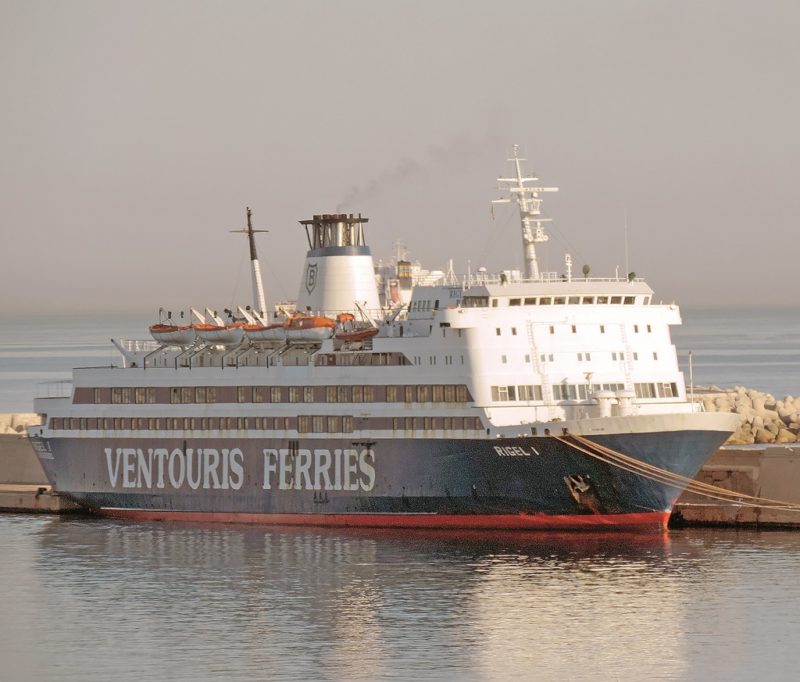
VENTOURIS FERRIES of Greece
The name of Ventouris has been operating ferries in the Aegean for over seventy years, and have since spread their network of routes to the Southern Adriatic, sailing from Bari to Igoumenitsa, Corfu, Kefalonia, Zante in Greece and also to Durres in Albania. The ferry ro-ros that have been used are Bari, Rigel I, Rigel II, Rigel III and Rigel VII. Bari is the former St. Anselm built in 1980 by Harland & Wolff Ltd. at Belfast, Rigel I is the former Bore I built by Wartsila in 1973 for Bore Line on charter to Silja Line and was broken up in 2021.
Rigel II is the former Visby built in 1980 for Rederi A/B Gotland, Rigel III is the former Turella built in 1979 for Viking Line, and Rigel VII is the former Japanese built ro-pax Orange 7 of 9,920 grt, built in 1994, with a service speed of 22.5 knots and accommodation for 750 passengers and 200 cars on her car deck.
ADRIA FERRIES
Adria Ferries was established in 2004 and has since transported over 2.5 million passengers and over 700,000 vehicles on the Bari to Durres in Albania route, and also from Ancona and Trieste to Durres. There are a dozen sailings per week from Bari, the voyage to Durres takes eight hours. The first ship in the fleet was AF Michaela, which also operated for Adria as Riviera del Cornero, with accommodation for over 800 passengers during 2004/15, followed by a larger ferry of the same name in the former ‘Visentini’ type Cartour between 2017/19. AF Claudia is also a ‘Visentini’ type with accommodation for 1,000 passengers with overnight berths for 280, while AF Francesca joined the fleet in 2009 as Domiziana from Tirrenia Navigazione for the new route from Bari, and AF Marina joined in 2012 as the ‘Visentini’ type Toscana also from Tirrenia Navigazione.
AZZURRA LINE
Azzurra Line ferries operate under the Italian flag during the summer months of June, July, August and September from Bari to Dubrovnik in Croatia, Kotor and Bar in Montenegro, and Durres in Albania. The latter service is also operated all year round three times weekly with a voyage time of 8.5 hours at a service speed of 15 knots by the ferry Azzurra of 3,061 grt and built in 1964 at Bremerhaven as Grenaa for the Grenaa to Hundested route. She operated for Olau Line between 1974 and 1977, and was purchased by Azzurra Line in 2001 and given the name of Azzurra.
RED STAR FERRIES
This line only operates in the summer season using the former Thoresen Car Ferries favourite Viking III of 3,824 grt with elegant interiors and accommodation for 600 passengers and 120 cars on her car deck, and was built in 1965 by Orenstein & Koppel A. G. at Lubeck. She has had nine other names during her long 56 year career to date including Red Star 1 operating for three months of the year from 22nd July to the end of September on the Brindisi to Saranda in Albania route, and from 17th July to 5th September on the Brindisi to Kefalonia and Zante route. She is currently laid up as Star N owned by Sea Star Ferries.
Red Star Ferries is part of a local Brindisi ferry company called Star Lines, with its subsidiary and agents of Seamed Trading & Shipping Srl, and operating year round passenger and freight ro-ro services from the port, including with the ro-ros Ionian Star of 5,695 grt with a blue hull and built at Aalborg in 1971 as Prinsessan Desiree for Sessan Line, and St. Damian of 4,299 grt with a yellow hull and built as Viking 3 for Viking Line of Finland in 1972.
ENDEAVOR LINES
This line ran from Brindisi to Greece and Adriatic countries until recent years, with ferries having sweeping brushstrokes of orange, blue and white on their hulls and ‘ENDEAVOR LINES in bold blue and red. Funnel colours were orange with the company logo on ferries such as Ionian Queen of 19,796 grt built in 1988 by IHI of Japan as New Akashia and currently running for Hellenic Seaways as Nissos Samos out of Brindisi.
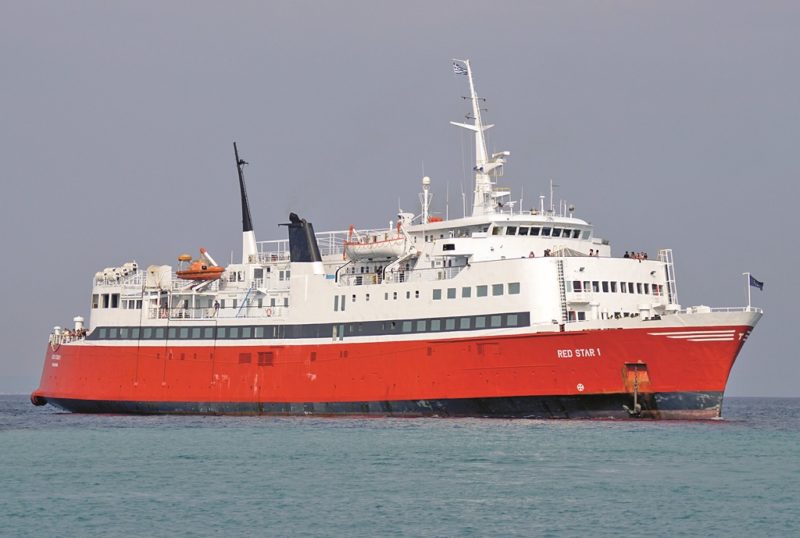
IMPRESA FRATELLI BARRETTA TOWAGE
The Fratelli brothers Domenico and Giovanni founded this important offshore, coastal and harbour towage company in 1945. Five powerful tugs are on watch today of up to 93 tonnes bollard pull at Brindisi owned by the Empresa Fratelli Barretta with red funnels and a central white band with an entwined ‘FB’ logo, and are also available for other types of towage. The Fratelli brothers were divers and they salvaged most of the scrap steel from the sunken wreck of the refrigerated cargo ship Asmara, torpedoed and sunk by a British submarine in 1941. The floating pontoon of 70 tons capacity that they used during the diving operation was called Tenax, and they risked their lives for up to 18 hours a day to send the scrap steel to a steel mill in Brescia, the last steel plates raised in 1950.
The proceeds of the sale of the scrap steel was enough to pay for the purchase of their first tug, renamed Vigor, followed by another tug built in 1944 of 622 grt and renamed Ardimentoso in 1952. The latter tug was also used as a rescue tug in the Lower Adriatic Sea and the Strait of Otranto for two decades. She was a powerful tug of overall length 171 feet and successfully towed into port the Danish coaster Karen Lindinger of 400 grt, which was aground on shoals near Brindisi with a cargo of 600 tons of high explosives and 15,000 detonators in boxes. The Port Authority of Brindisi in 1952 authorised the company to carry out all of the harbour towage, and five tugs were purchased for this purpose up to 1973, named Valoroso, Poderoso, Strepitoso, Maestoso and Coraggioso of up to 1,000 bhp engine power. The latter pair were purchased in 1972 from the Alexandra Towing Company of Liverpool as the steam tugs North Wall and North Buoy, sisters of 219 grt built in 1959, with both later turned over to breakers at Brindisi on 21st December 1988. The company had a fleet of six steam tugs in 1973 in Ardimen-toso of 622 grt, Coraggioso and Maestoso of 219 grt, and Poderoso and Strepitoso of 267 grt, and Valoroso of 249 grt.
The former Greek tanker Andros Triumph of 50,250 dwt was built by Mitsui in Japan in 1957 and sold to the Goulandris family and renamed Lykaion, but she grounded in the Strait of Otranto with an oil cargo that first needed to be transhipped to another tanker during very rough seas before the Fratelli Barretta tugs could refloat her. The Greek ferry Heleanna of 11,232 grt caught fire in the Strait of Otranto 25 miles off Brindisi on 28th August 1971 and at least 25 people died and others were missing. The ferry was making two voyages per week from Patras to Ancona and 1,071 people were rescued by ships and the local Brindisi tugs, of which 243 people had sustained slight or more serious injuries. She had 200 cars on board and had been converted from the tanker Mundekal of 17,610 dwt built in 1954 for Rederi A/B Kungsoil of Sweden.
The war built cargo ship San Nicola of 10,000 dwt exploded and sank off Brindisi in November 1972, with the local tugs despatched to find survivors. Another deadly explosion, this time inside the harbour of Brindisi, on 28th April 1990 occurred when the small gas tanker Val Rosandra of 3,500 dwt erupted in a huge fireball. She was engaged in the coastal Italian trades for owner Montanari of Trieste and was discharging a cargo of polypropylene when a fire started onboard. The crew were unable to control the huge flames and alerted the port authorities. The ship was towed out of the harbour by Fratelli Barretta tugs, spraying foam all the while, to ten kilometres off the port, where fire crews attempted to extinguish the blaze from a safety distance of 300 metres. The salvage attempts continued for almost three weeks before a different strategy was attempted on 15th May, when she was towed to a position around 50 kilometres off the port, where a safety zone of 22 kilometres in radius and six kilometres in height was set up. The remaining 1,800 tons of polypropylene plus her bunker fuel was then blown up by explosives, and a final round of explosives on 11th June finally sank her. Montanari Navigazione spA currently have a big fleet of twenty gas tankers up to 30,000 dwt, all with names having the prefixes ‘Val’ or ‘Valle’.
The Egyptian ro-ro cargo ship Taba of the Egyptian Navigation Company of Alexandria was rescued in 1994 by Fratelli Barretta tugs when a list of 26 degrees to starboard occurred. She was towed into port to restow her cargo. She had been built in 1985 at Travemunde for this owner, and after thirty years of service for the same owner she capsized and sank off Safaga in the Red Sea on 6th July 2015. The tanker Lido II of 66,800 dwt and built in 1971 was apprehended on 2nd May 1994 in the Adriatic by United Nations naval officers after flooding had been reported in her engine room, and charged with a breach of sanctions against Yugoslavia. The flooding was brought under control and the tanker was escorted by Fratelli Barretta tugs to Brindisi and detained.
The company had entered the offshore oil towage market for client Esso Oil for the towage of much oil related equipment from Venice to Libya, as well as for the British oil company Enterprise Oil. The first newly built motor tug in 1981 had been Teodoro Barretta of 3,800 bhp power from the Giorgetti yard in Viareggio, and she was followed by new tugs Vinicio Barretta, Cornelia Barretta, Ardimentoso (2), and Giuseppe Barretta of 3,300 bhp power by the end of the 1980s decade. The new tugs Marietta Barretta and Asmara of 4,651 bhp power were engaged in off shore oil related towage for ENI of Italy at the Aquila oilfield off Albania, as well as the salvage of motor vessel Irinikos with a large cargo of coal aground at the entrance to the Port of Brindisi in 2004. The Italian cruiser Vittorio Veneto was refloated by company tugs after having run aground in the harbour of Vlore in 1997 in the middle of a war zone considered to be at risk of war. Albanian refugees then attempted to cross the Adriatic and the company received recognition for its humanitarian operations. The collision of the motor ships Breza and Goldenstar in the Strait of Otranto to south of Brindisi in 1997 saw them locked together until pulled apart by Fratelli Barretta tugs and towed into port.
The towage into port of the fire ravaged ro-pax Norman Atlantic in late December 2014 has already been mentioned, however sadly the death of two of the crew of Marietta Barretta occurred when a towing hawser snapped and coiled back to the tug at speed. The latest and very powerful tug Tenax of 93 tonnes bollard pull evokes memories of their first floating pontoon of the same name, the new tug is for offshore and diverse long distance towing. The present fleet is five tugs in Tenax, Asmara, Marietta Barretta, Vinicio Barretta and Cornelia Barretta of between 43 and 93 tonnes bollard pull, three floating pontoons and 46 employees. Tenax of 490 grt was built in 2010 by the Gemsan Ship-building Company in Istanbul. The tanker Corona Borrale was rescued on 21st January 2013, and other assistance has been offered in recent years to the LNG carrier FSRU Toscana, the oil rig Mimar Snam, and to barges that had broken adrift from their tugs.
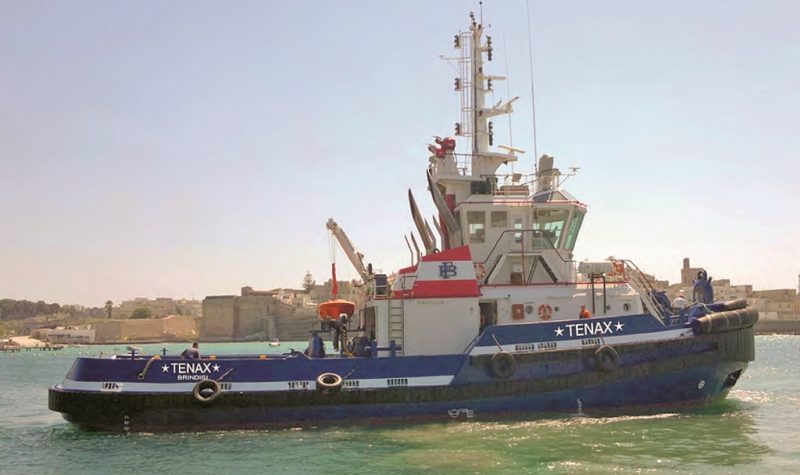
POSTSCRIPT
There are future plans to build a new ferry berth at San Apollinare in the Inner Harbour of Brindisi as passenger numbers continue to rise year on year, and other port improvements include the construction of a rainwater treatment plant for the water supplies to the Costa Morena Ferry Terminals and Costa Morena Open Ferry berths, and a new surveillance and security control service for all port areas. The huge scale of both the regular winter passenger and freight ferry traffic and the enormous numbers of summer tourists using the many ferries on the shortest sea routes from the Southern Adriatic ports of both Bari and Brindisi is at first very surprising to a visitor to the region, until one realises that the port is a major gateway to Greece and three other countries. Brindisi has an average of fifteen ferry sailings per day in the high tourist season.
It was particularly pleasing to see a former Thoresen favourite, Viking III, dating from her new first season from British ports in 1965, still operating a full summer season from Brindisi to Albania and Greece.
The main and important ports of Bari and Brindisi, together with three other minor ports, that form the Porti dell’Adriatico Meridionale or the Southern Adriatic Ports of Italy are well worth a visit.




Comments
Sorry, comments are closed for this item